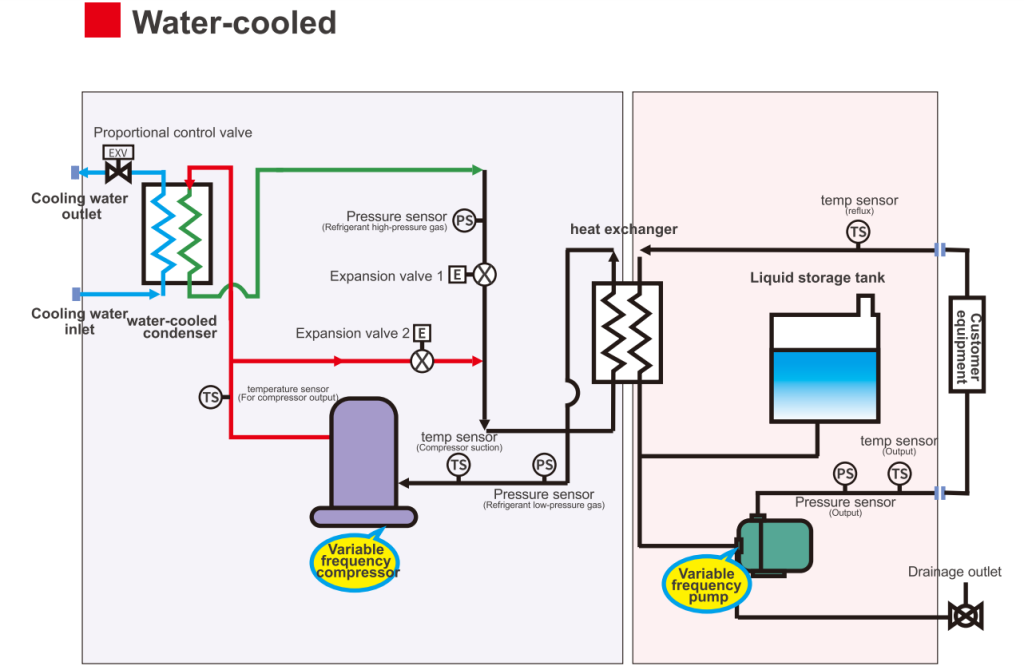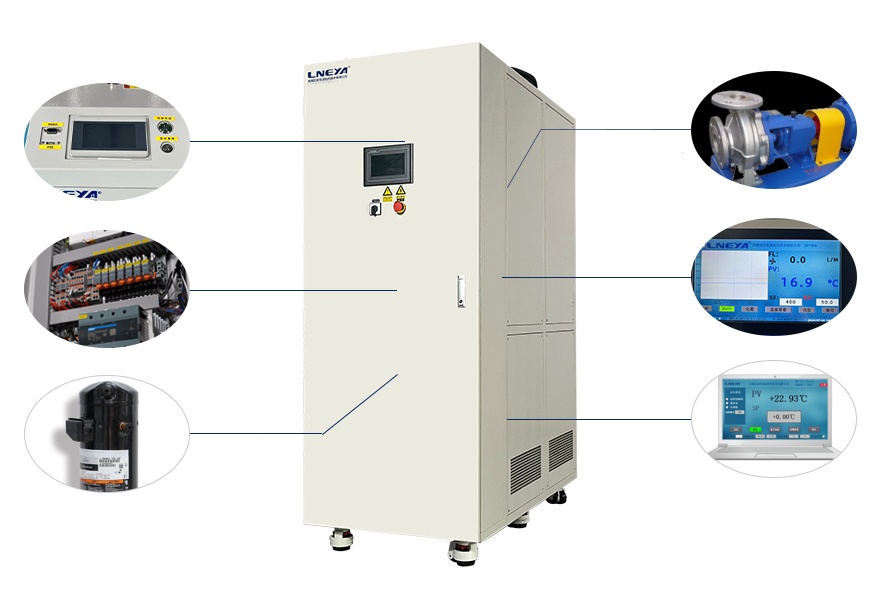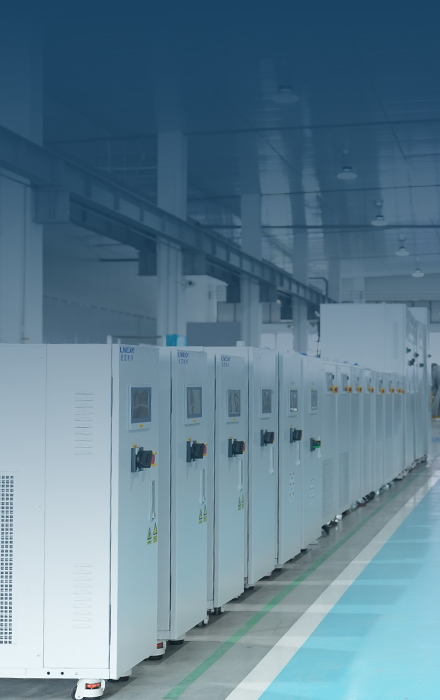O que é um refrigerador arrefecido a água
One of the most common systems you’ll see keeping industrial equipment and processes cool is a refrigerador arrefecido a água. But what makes it different, and why do so many facilities rely on it? Whether you’re running a manufacturing plant, a data center, or a large commercial building, understanding how water-cooled chillers work can help you make better cooling decisions.
What is a Water-Cooled Chiller?
A water-cooled chiller works to pull heat away from machines or industrial processes, keeping everything running smoothly. It works by using a low-temperature refrigerant that absorbs heat as it evaporates. The “water-cooled” part comes from the fact that water—not air—is used to cool the condenser.
Water flows from the cooling tower into the chiller’s condenser, where it takes in heat from the hot refrigerant and turns it back into liquid. The warmed water then flows back to the cooling tower, where fans and evaporation release the heat into the surrounding air. This loop repeats continuously, keeping your system consistently cool.
Depending on the compressor type, water-cooled chillers can be classified as screw, rolo, or centrifugal. Large factories typically rely on centrifugal chillers because they can handle massive cooling loads efficiently. Smaller loads, such as labs or small production lines, often use screw or scroll units. Choosing the right type depends on the scale of your operation and the cooling demands.


Benefits of Water-Cooled Chillers
Higher Heat Transfer Efficiency
Water can carry more heat per unit volume than air, which means your chiller can move energy faster through pipes and heat exchangers. When you pair the system with pumps and a cooling tower, the heat is removed and released efficiently.
In comparison, air-cooled systems rely on airflow, which has a lower heat capacity, so the same amount of heat takes longer to dissipate. For operations that generate a lot of heat—like metal processing, injection molding, or server rooms—a water-cooled chiller can reduce energy consumption while maintaining stable temperatures.
More Precise Temperature Control
Because water has a high specific heat and excellent thermal conductivity, it absorbs and transfers refrigerant heat quickly. This allows your system to maintain tight temperature tolerances. For example, in a semiconductor fab or pharmaceutical lab, even small temperature fluctuations can affect product quality.
Water-cooled chillers keep the loop temperature stable, preventing frequent compressor cycling and protecting sensitive equipment. You don’t need to worry about the system struggling when outside temperatures swing, because water stabilizes the cooling loop.
Longer Lifespan
With proper maintenance, a water-cooled chiller often lasts longer than an air-cooled system. Air-cooled units typically operate for 10–15 years, while water-cooled chillers can last 15–20 years. This is based on real-world user experience worldwide.
The higher heat transfer efficiency reduces the load on compressors and pumps, while the stable operating temperature prevents frequent startups and overloads. Most water-cooled units are installed indoors, away from dust, UV exposure, or extreme outdoor temperatures, which further reduces wear and tear.
Lower Noise Levels
If you’re dealing with noisy fans in air-cooled chillers, water-cooled units offer a quieter alternative. Most noise comes from the compressor, and using a variable-speed compressor along with vibration-damping measures can keep sound levels below 50 decibels. Many users report that it’s much easier on the ears, particularly in office or lab environments where quiet is important.
Reduced Energy Costs
Although setting up a water-cooled system costs more upfront, it often leads to lower energy bills over time. Their efficient heat transfer and stable temperature control reduce energy usage for both cooling and compressor operation.
Over time, these savings can offset the higher upfront cost, making water-cooled chillers a cost-effective solution for high-demand industrial and commercial applications.


Limitations of Water-Cooled Chillers
Water Availability and Quality
Since water is the main cooling medium, poor water quality can increase costs due to treatment and monitoring requirements. Areas facing water shortages or droughts may find using a water-cooled system expensive or impractical.
Additionally, if you neglect water treatment, scale, corrosion, and biofilms can form, reducing efficiency and potentially damaging the system.
Higher Initial Costs and Complexity
A water-cooled system isn’t just the chiller—you also need a cooling tower, pumps, and piping. That raises the upfront cost and makes installation more complex.
You may need specialized contractors to ensure proper setup, which could extend project timelines. For short-term or budget-constrained projects, air-cooled chillers can sometimes be a more practical choice.
Requisitos de espaço
While the chiller itself is compact, the overall system, including pipes and a cooling tower, needs enough space. Planning for installation space is essential, especially in retrofits or facilities with limited footprint.
Maintenance Requirements
Regular maintenance is more critical for water-cooled systems than air-cooled ones. You’ll need to monitor water chemistry, clean cooling towers, and inspect pumps and valves. While this adds to operating effort, a well-maintained system performs better and lasts longer.

Typical Applications of Water-Cooled Chillers
Water-cooled chillers are used wherever precise, reliable cooling is needed.
In industrial manufacturing, they keep machines like injection molders, presses, or CNC equipment operating at optimal temperatures, ensuring product quality and consistent production rates.
In data centers, water-cooled chillers handle the intense heat generated by rows of running servers, keeping equipment safe and stable.These chillers prevent overheating, reduce the risk of downtime, and maintain optimal operating conditions for sensitive electronics.
In the food and beverage industry, water-cooled chillers help control fermentation, keep ingredients at the right temperature, and cool processing equipment. This is crucial in breweries, dairy plants, and ice cream production, where temperature accuracy affects safety and product consistency.
Commercial buildings, including offices, hospitals, and shopping centers, also use water-cooled chillers. They can handle large cooling loads efficiently, and they work well in spaces with high demand, such as server rooms, theaters, or intensive HVAC systems.
Conclusão
Water-cooled chillers provide a versatile, efficient, and long-lasting cooling solution for a variety of applications. If you’re planning a new facility or upgrading an existing system, they can reduce energy costs, maintain precise temperatures, and ensure reliable operation over the long term.
The LNEYA team can help you determine the best refrigerador arrefecido a água for your operation. Whether you need a standard system or a custom design, we can guide you from initial planning to installation and ongoing maintenance.
Reach out today to discuss your cooling needs and find the right solution for your facility.

- What Does a 200 Ton Chiller Cost
- Temperature Control in Photolithography
- Is a Used Chiller a Good Idea
- Chiller Components and Refrigeration Fundamentals Guides
- Chiller Types and Selection Guides
- How Does a Peltier Cooler Work
- Peltier Chiller vs. Compressor Chiller
- What Is a Peltier Chiller
- Dezembro 2025
- Novembro 2025
- Outubro 2025
- Setembro 2025
- Agosto 2025
- Julho 2025
- Junho 2025
- Maio 2025
- Março 2025
- Fevereiro 2025
- Janeiro 2025
- Dezembro 2024
- Novembro 2024
- Outubro 2024
- Setembro 2024
- Agosto 2024
- Julho 2024
- Junho 2024
- Maio 2024
- Abril 2024
- Março 2024
- Fevereiro 2024
- Setembro 2023
- Julho 2023
- Junho 2023
- Maio 2023
- Janeiro 2023
refrigerador arrefecido a ar refrigerador Instalação de chillers Chiller Maintenance chiller refrigerant refrigeradores Congelador de montagem a frio refrigerador de refrigeração sistema de arrefecimento e aquecimento sistema de arrefecimento sistema de controlo dinâmico da temperatura chiller energeticamente eficiente refrigerador à prova de explosão congelador circulador de aquecimento refrigerador industrial refrigeradores industriais arrefecimento industrial congelador industrial frigorífico industrial reator de camisa refrigerador de laboratório refrigerador de baixa temperatura notícias refrigerador de óleo refrigerador de processo resfriamento de processo refrigerador do reator arrefecimento do reator arrefecimento do reator aquecimento aquecimento do reator arrefecimento bomba de circulação refrigerada refrigerador de parafuso refrigerador de semicondutores refrigerador de teste de semicondutores sundi tcu controlo da temperatura câmara de ensaio termóstato refrigerador de temperatura ultra baixa refrigerador de ensaio de veículos refrigerador de água refrigerador arrefecido a água
Refrigeradores relacionados
FALE CONOSCO
TEL:
EMAIL:
WeChat & WhatsApp:

Wechat QR

Tem alguma pergunta ou precisa de um orçamento? Preencha o formulário abaixo e nossa equipe entrará em contato dentro de 24 horas.
 LNEYA Refrigeradores industriais Fabricante Fornecedor
LNEYA Refrigeradores industriais Fabricante Fornecedor
















